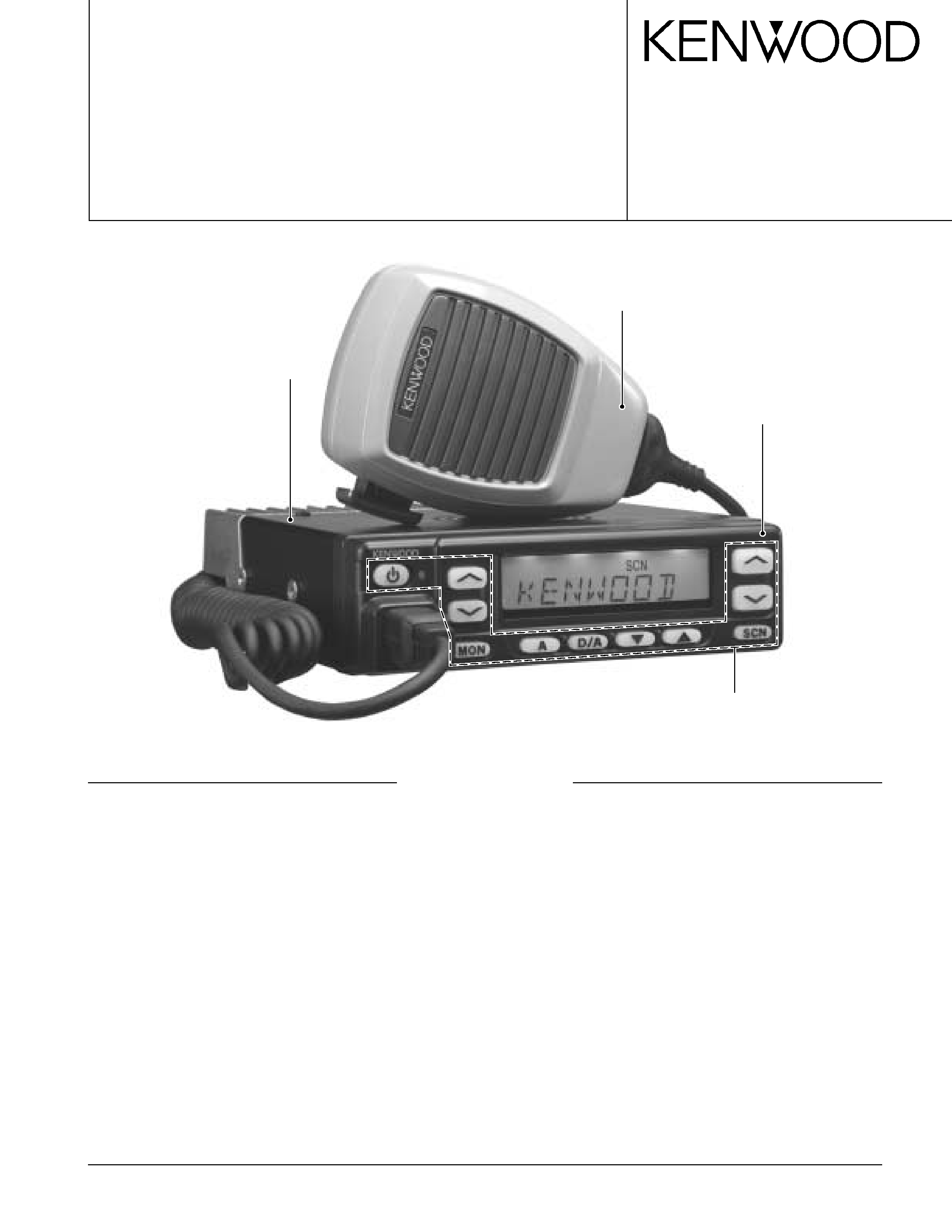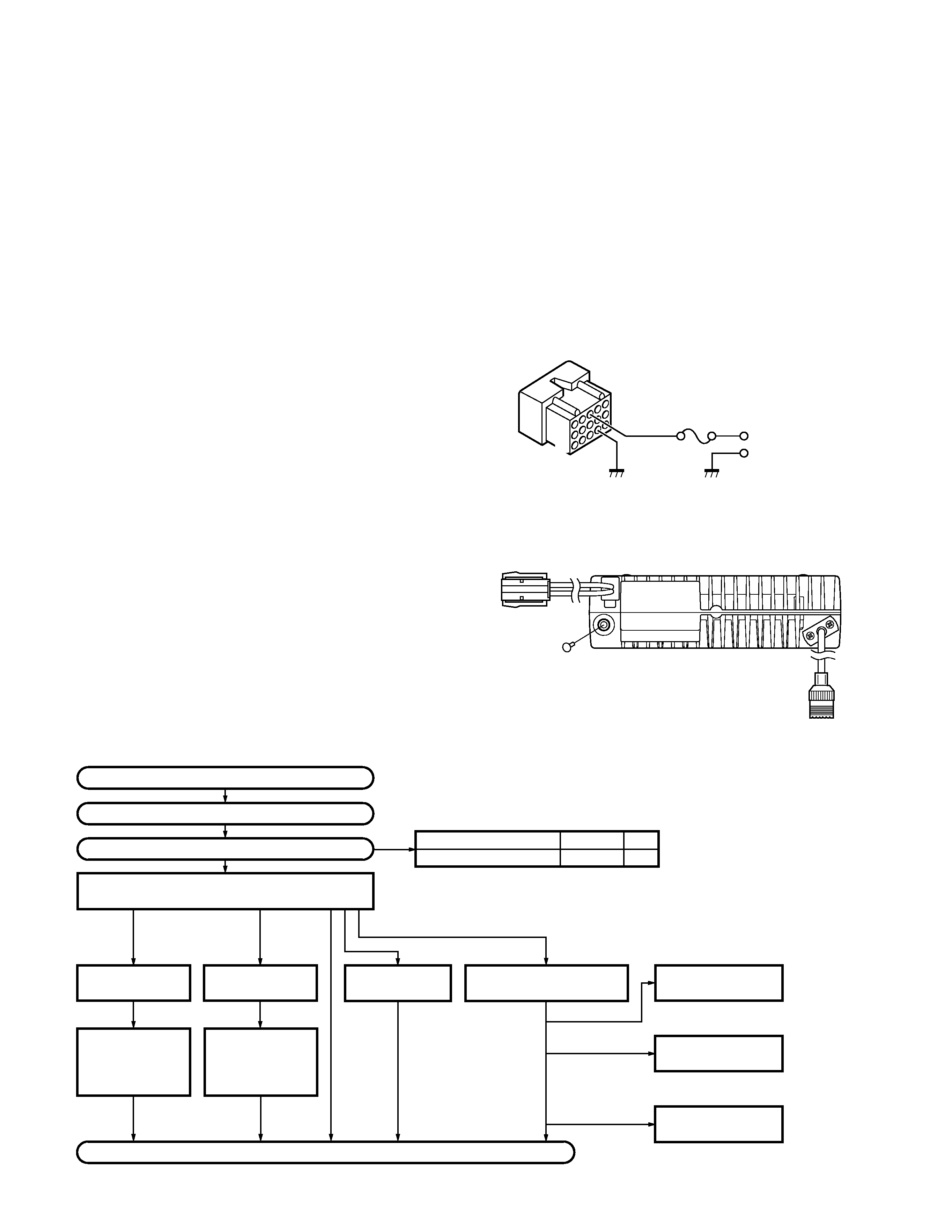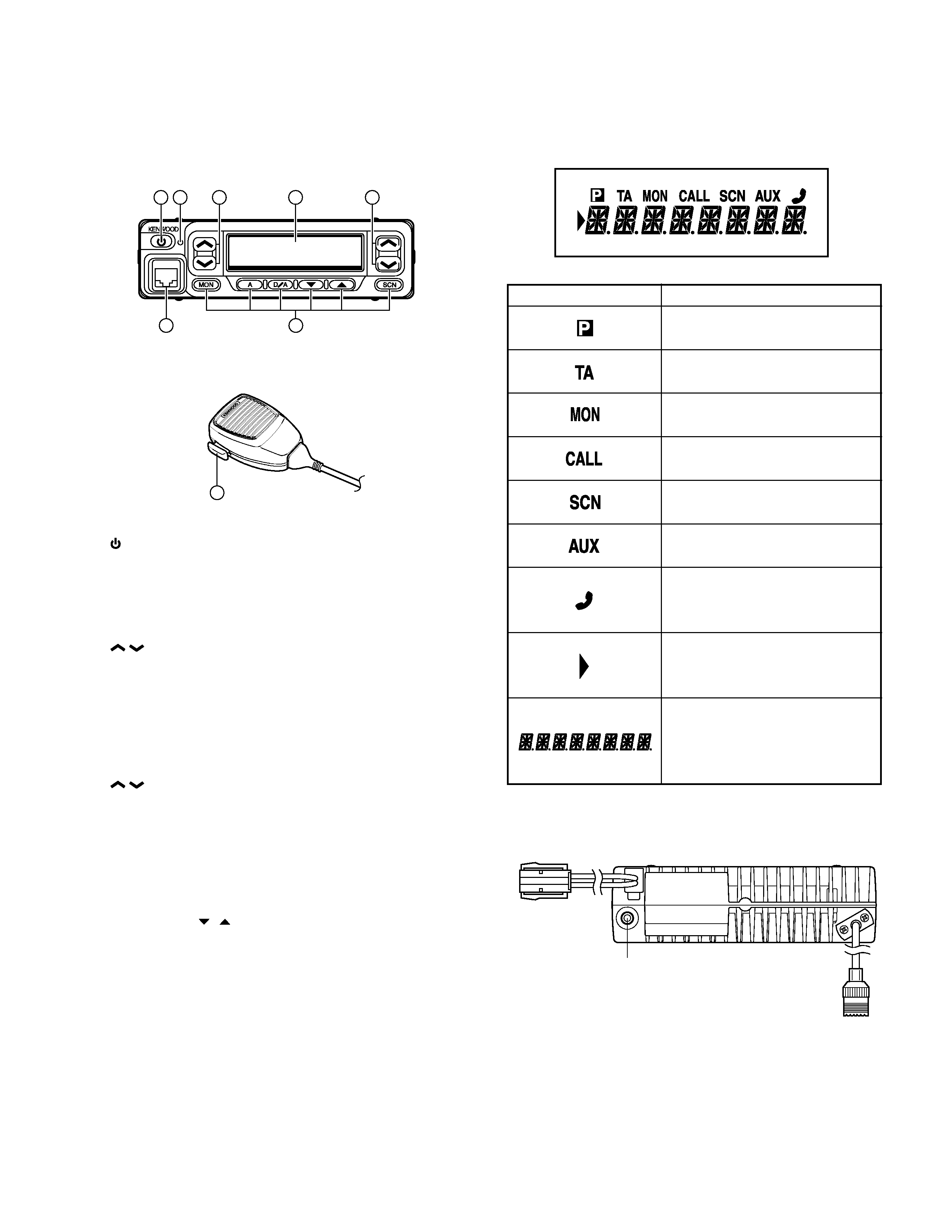
5
TK-863G
Following the above sequence, the transceiver continues
to transmit and receive. While in Emergency mode, switch
the power OFF or press [Emergency] for longer than the pro-
grammed "Emergency Key Delay Time" to exit Emergency
mode.
Note : This function can be assigned to only the Foot
switch.
· Group up/down
When the key is pressed each time, the group number to
be selected is incremented/decremented and repeats if held
for one second or longer.
· Home group
Each pressing of the key selects a preset system/group.
· Horn alert
If you are called from the base station or other party using
signalling for Horn Alert function selected in a group, while
you are away from your transceiver, you will be alerted by
the vehicle horn or some other type of external alert. To turn
the horn alert function on , press this key. A confirmation
tone sounds.
If this key is pressed again, the horn alert function is
turned off.
· Key lock
Pressing this key causes the transceiver to accept entry
of only the [Vol Up/Down], [Key lock], [PTT], [Monitor Mo-
mentary], [Monitor Toggle], [Squelch Off Momentary],
[Squelch Off Toggle], and [Emergency] keys.
· Memory
This key allows DTMF memory data to be recalled; up to
32 memories each with a memory dial of up to 16 digits and
an A/N of up to 8 digits per memory.
· Monitor
Used to release signalling or squelch when operating as a
conventional.
· None
Sounds error operation beep, and no action will occur.
Use this function when the transceiver is required to be
more simple operated.
· Public address
Public address amplifies the microphone audio, and out-
puts it through a PA speaker. PA is activated by pressing
this key. A confirmation tone sounds, (and the display
shows "PA"). PA can be activated at anytime (scanning or
non-scanning).
If this key is pressed again, a confirmation tone will
sound, (the display will return to the normal group or SCAN
display), and the PA function will turn off.
OPERATING FEATURES
· Redial
If you press this key when the system/group is displayed,
the last transmitted DTMF code will appear on the display.
Pressing the PTT switch at this time will transmit the dis-
played DTMF code.
· Scan
Press this key starts scanning. Pressing this key stops
scanning.
· Scan del/add
Used to select whether system scan routines are used
during system scan. Each pressing of the key (to ON)
toggles between lockout and lock. The scan routine is
started when on lock. The DEL indicator flashes when the
system is on lockout.
· Scan temporary delete
This key is temporarily deleted a system being scanned.
If you press this key when scan is stopped (when a call is
being received from another station), the system is tempo-
rarily deleted and scanning restarts.
This key operates even when "Scan Type" is set to "List
Type System Scan".
· System up/down
When the key is pressed each time, the system number
to be selected is incremented/decremented and repeats if
held for one second or longer.
· Telephone disconnect
Pressing this key ends an RIC connection (disconnects
the telephone line).
· Volume up/down
When the key is pressed, the volume level is increased/
decreased and repeats if held for 200ms or longer.
4. Scan Operating
s System Scan
System scan can be selected with the "Scan" key by pro-
gramming the scan feature. When the "Scan" key is
pressed and the "SCN" mark appears, scan mode in en-
tered. Scanning starts from the system following the cur-
rently displayed system. When a call is received, scanning
stops, and the system and group are displayed.
When programming key is touched during scanning, the
scan stops and the revert system or group can be changed.
Scanning resumes one second after the key is released.
There are two types of system scan.
· Fix system scan
All the set systems except locked-out ones are scanned.
If the Del/Add feature is assigned to the programmable key,
it can be controlled from the front panel.












